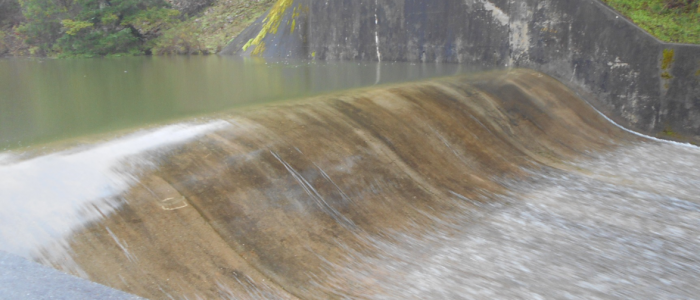Most of us never think about how water gets to the tap. Luckily, we don’t have to. Pumps, treatment plants, and pipes bring us clean water. But our water systems are aging. Our water systems need constant investment to continue delivering life’s most essential resource. Each month when you pay your water bill, you are investing in your water system. If your water rates go up even though you’ve been conserving, its’ because the maintenance costs for your water system never go down. Your water rates also pay for planning how to adapt our water supply to big challenges such as drought and seawater intrusion into coastal groundwater aquifers. The good news is that your investment has amazing returns! You get water for a few pennies a gallon, and you don’t have to run your own water treatment plant or conduct water quality testing!
Click and advance on the slides below to learn about water supply and treatment infrastructure projects that are improving water supply reliability in Santa Cruz County.
Replacement of Aging Water Pipelines Costs About $1 Million per Mile!
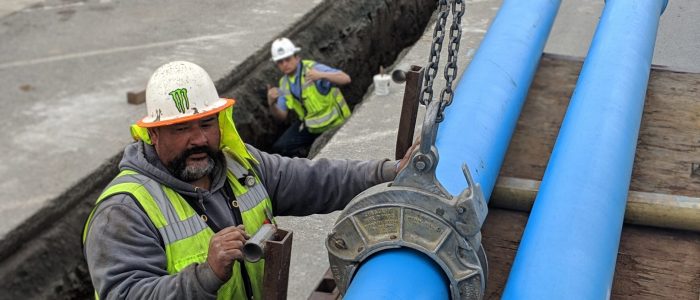 City of Watsonville - It costs $1 million per mile to replace aging pipelines.
City of Watsonville - It costs $1 million per mile to replace aging pipelines.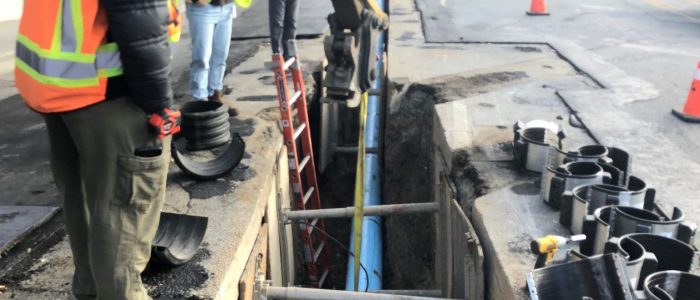 City of Watsonville - Over 50% of water pipes are 50 to 80 years old. The Water Division has been replacing aging sections of pipeline each year with new zinc-coated ductile iron pipes to resist against the corrosion our Watsonville acidic soils create on metal. It cost about $1 million per mile to replace aging pipelines.
City of Watsonville - Over 50% of water pipes are 50 to 80 years old. The Water Division has been replacing aging sections of pipeline each year with new zinc-coated ductile iron pipes to resist against the corrosion our Watsonville acidic soils create on metal. It cost about $1 million per mile to replace aging pipelines. City of Santa Cruz Municipal Utilities - North Coast Pipeline Replacement Project in challenging terrain. Springs and streams along the coast north of the City limits supply approximately 25% of the City’s raw water. Portions of the pipeline have been replaced to ensure continued reliability.
City of Santa Cruz Municipal Utilities - North Coast Pipeline Replacement Project in challenging terrain. Springs and streams along the coast north of the City limits supply approximately 25% of the City’s raw water. Portions of the pipeline have been replaced to ensure continued reliability.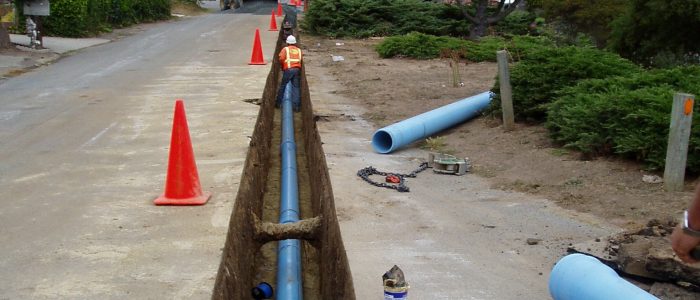 Soquel Creek Water. Replacing water mains before they fail can help prevent big leaks which waste water and can damage roadways and property. Soquel Creek Water District has approximately 170 miles of water main lines.
Soquel Creek Water. Replacing water mains before they fail can help prevent big leaks which waste water and can damage roadways and property. Soquel Creek Water District has approximately 170 miles of water main lines.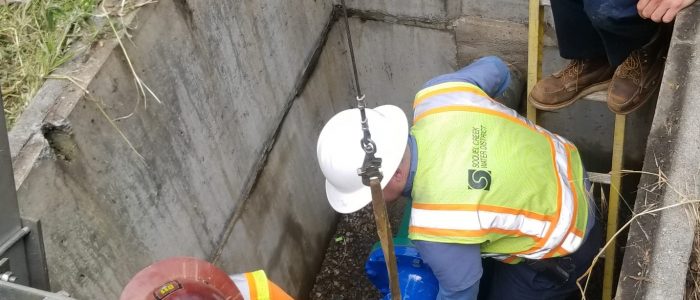 Soquel Creek Water. Water meters, like this large 8 inch meter, need to be replaced when they have reached the end of their useful life and may start under-recording usage. Accurate metering helps prevent unneccesary water loss. Soquel Creek has around 15,000 metered connections.
Soquel Creek Water. Water meters, like this large 8 inch meter, need to be replaced when they have reached the end of their useful life and may start under-recording usage. Accurate metering helps prevent unneccesary water loss. Soquel Creek has around 15,000 metered connections. San Lorenzo Valley Water District - Water Main Replacement
San Lorenzo Valley Water District - Water Main Replacement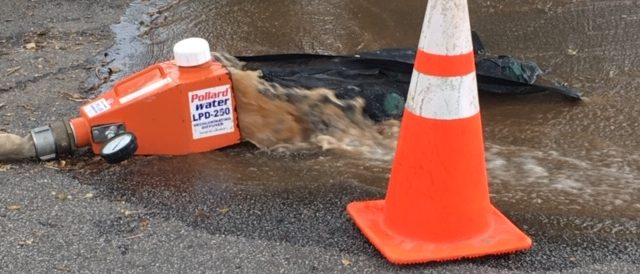 San Lorenzo Valley Water District - Without annual "flushing", buildup of sediment and biofilms in water mains can restrict water flow, contribute to pipe corrosion and deteriorate water quality. SLVWD flushes five areas within its system annually, including Ben Lomond, Felton, Lompico and Scotts Valley.
San Lorenzo Valley Water District - Without annual "flushing", buildup of sediment and biofilms in water mains can restrict water flow, contribute to pipe corrosion and deteriorate water quality. SLVWD flushes five areas within its system annually, including Ben Lomond, Felton, Lompico and Scotts Valley.
New Well Construction
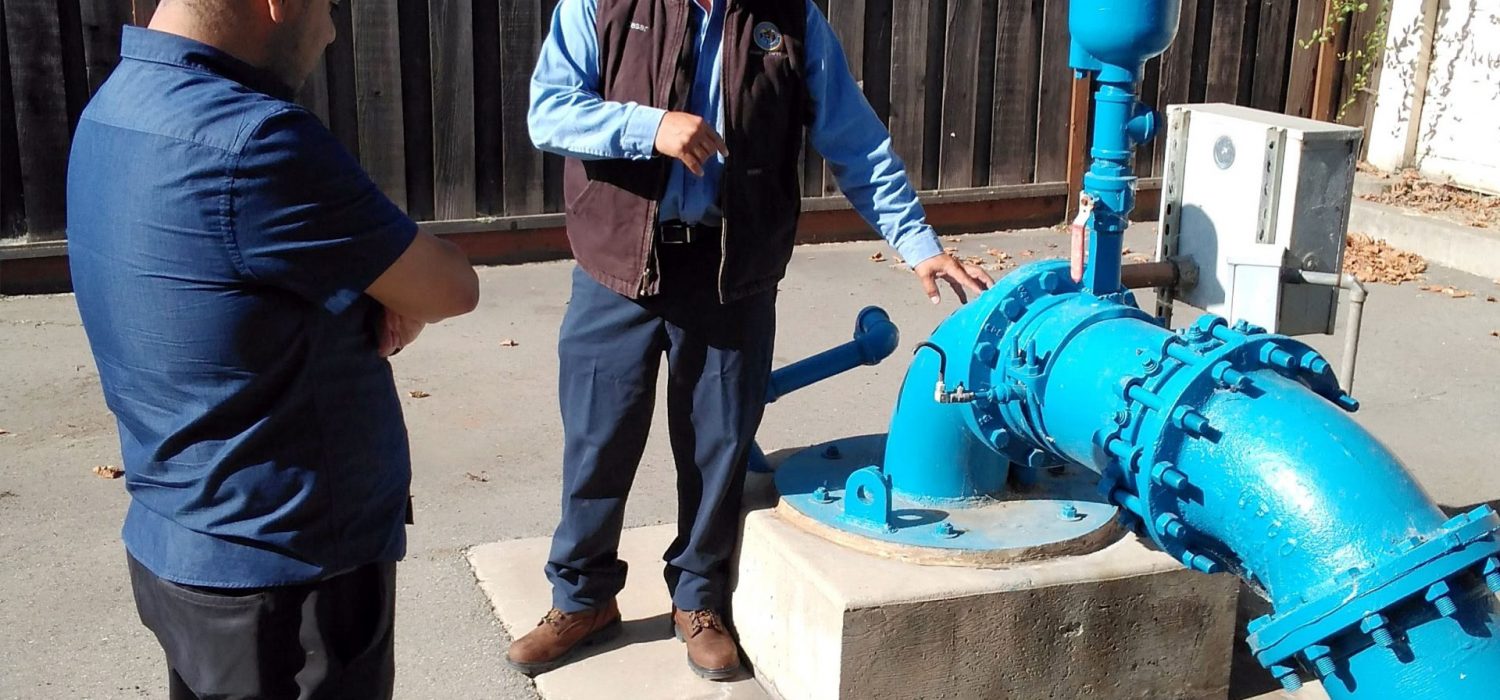 City of Watsonville - Every day 7 million gallons of water are pumped from our groundwater wells; the source of 90% of our tap water. Half of our wells are more than 50 years old; and the oldest well is 90 years old. The City will be building a new well in the coming year to continue providing safe and reliable drinking water to its residents. It costs about $3 million to construct a new groundwater well.
City of Watsonville - Every day 7 million gallons of water are pumped from our groundwater wells; the source of 90% of our tap water. Half of our wells are more than 50 years old; and the oldest well is 90 years old. The City will be building a new well in the coming year to continue providing safe and reliable drinking water to its residents. It costs about $3 million to construct a new groundwater well. Soquel Creek Water District - Granite Way well was constructed as part of the Soquel Creek Water District's well master plan. New wells are being built further away from the coastline to help prevent seawater intrusion. Soquel Creek Water District is strategically moving wells inland to help prevent seawater intrusion.
Soquel Creek Water District - Granite Way well was constructed as part of the Soquel Creek Water District's well master plan. New wells are being built further away from the coastline to help prevent seawater intrusion. Soquel Creek Water District is strategically moving wells inland to help prevent seawater intrusion.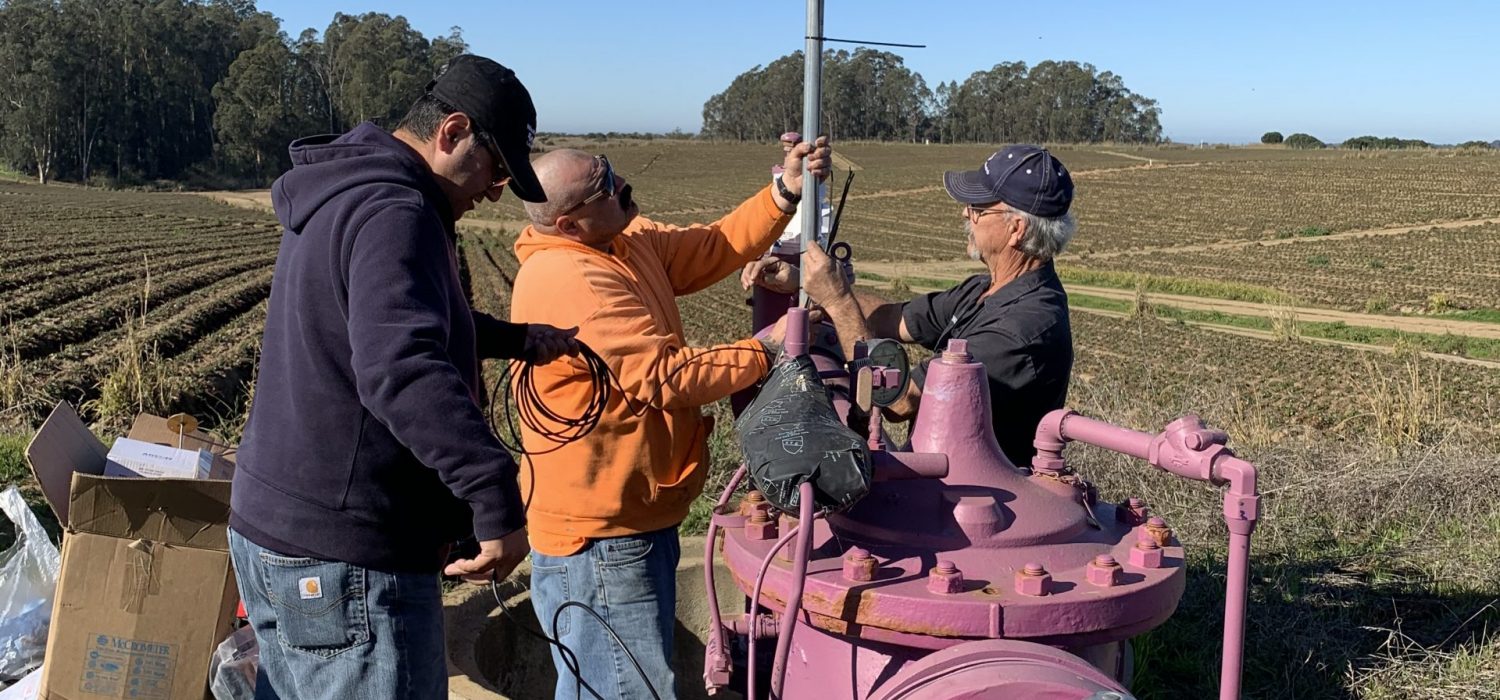 Pajaro Valley Water Management Agency - This is an image of our staff and contractors replacing traditional meters with telemetery, digital meters on our Coastal Distribution System, which is more than 23 miles of pipeline that sends mostly recycled water, along with recharged and recovered water and inland well water to farmers along the coast impacted by groundwater overdraft and resulting seawater intrusion. The telemetery meters will allow us to know flow and total volume, every 15 minutes. Allowing PV Water to know what farmer is using delivered water, preventing misuse, overuse, leaks and allowing us to better more accurately distribute our limited supplies to more impacted growers. With solar powered, cell phone enabled meters, PV Water can better quantify delivered water flows rates every 15 minutes, making our supplemental water resources go further to more farmers, to stop seawater intrusion.
Pajaro Valley Water Management Agency - This is an image of our staff and contractors replacing traditional meters with telemetery, digital meters on our Coastal Distribution System, which is more than 23 miles of pipeline that sends mostly recycled water, along with recharged and recovered water and inland well water to farmers along the coast impacted by groundwater overdraft and resulting seawater intrusion. The telemetery meters will allow us to know flow and total volume, every 15 minutes. Allowing PV Water to know what farmer is using delivered water, preventing misuse, overuse, leaks and allowing us to better more accurately distribute our limited supplies to more impacted growers. With solar powered, cell phone enabled meters, PV Water can better quantify delivered water flows rates every 15 minutes, making our supplemental water resources go further to more farmers, to stop seawater intrusion.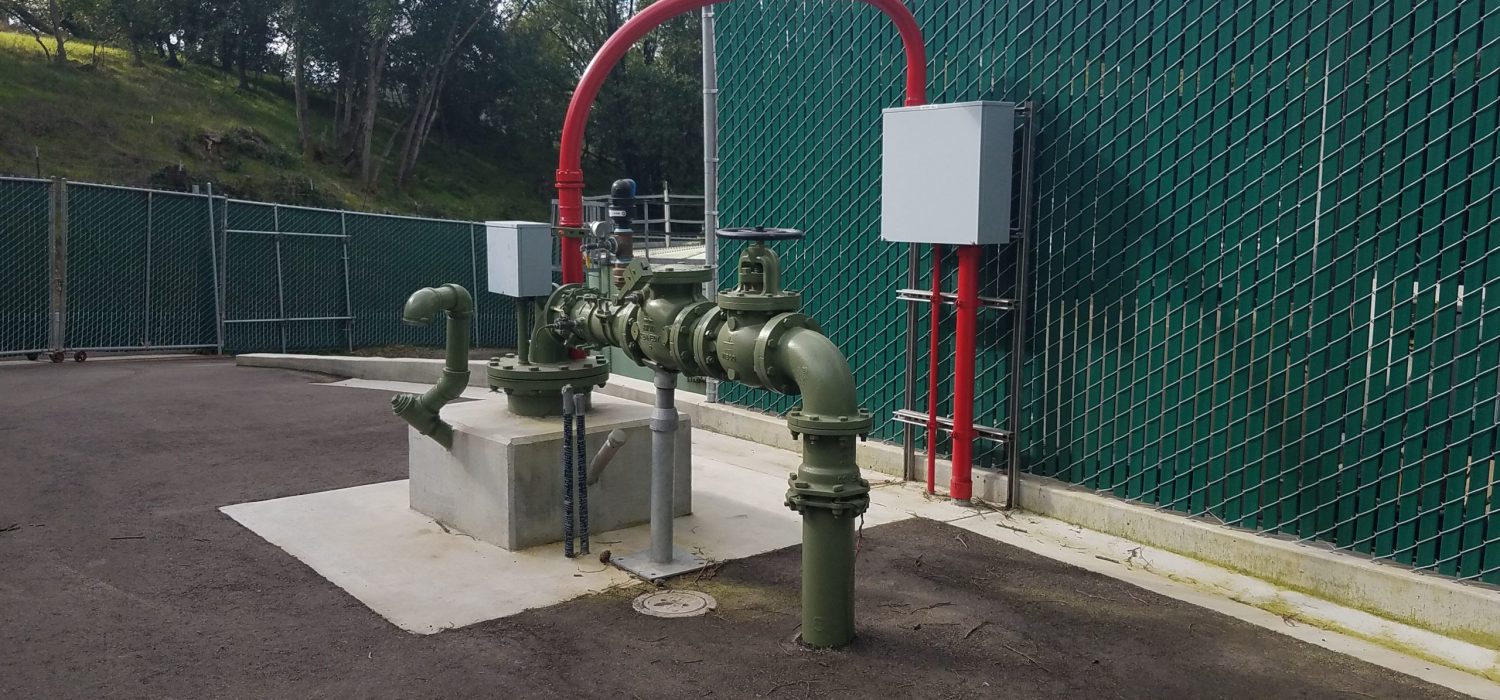 Scotts Valley Water District - Orchard Run Well - The District's newest well that provides over 500 gallons per minute.
Scotts Valley Water District - Orchard Run Well - The District's newest well that provides over 500 gallons per minute.
Water Tank Replacement
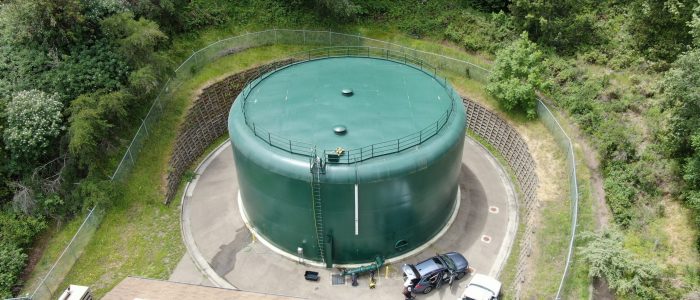 Soquel Creek Water - Cornwell Tank provides gravity pressure and fire protection to customers and is part of a network of tanks that are necessary for adequate service to hilly areas. Soquel Creek Water District has 18 water storage tanks.
Soquel Creek Water - Cornwell Tank provides gravity pressure and fire protection to customers and is part of a network of tanks that are necessary for adequate service to hilly areas. Soquel Creek Water District has 18 water storage tanks.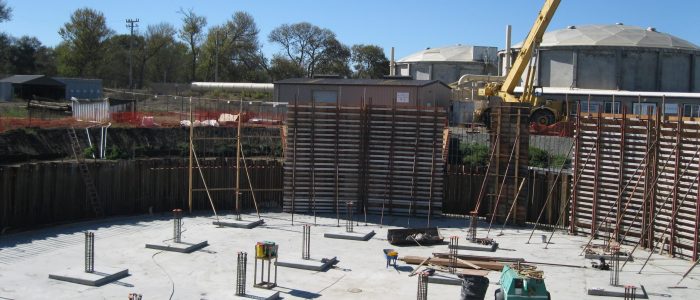 Pajaro Valley Water Management Agency -The PVWMA (Pajaro Valley Water Management Association) delivers recycled water to 95 agricultural water users in the 8,000 acre coastal area. It cost $11 million to build this new 2 million gallon water storage tank at the recycled water treatment plant.
Pajaro Valley Water Management Agency -The PVWMA (Pajaro Valley Water Management Association) delivers recycled water to 95 agricultural water users in the 8,000 acre coastal area. It cost $11 million to build this new 2 million gallon water storage tank at the recycled water treatment plant.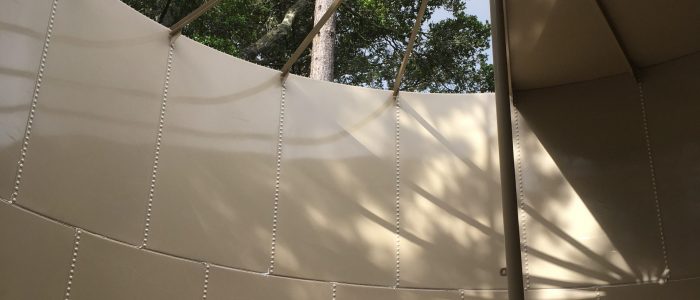 San Lorenzo Valley Water District - The combined condition of the corrosion and earthquake damage to the Blue tank warranted immediate replacement. The new 65,000 gallon bolted steel tank provides water for the Mañana Woods community. The orginal Blue Tank, named for its exterior color, was originally installed in the 1980s by the Mañana Woods Mutual Water Company, which was acquired by the San Lorenzo Valley Water district in 2005. The orginal Blue Tank survived the 1989 Loma Prieta Earthquake. The cost to replace the tank was $100,000.
San Lorenzo Valley Water District - The combined condition of the corrosion and earthquake damage to the Blue tank warranted immediate replacement. The new 65,000 gallon bolted steel tank provides water for the Mañana Woods community. The orginal Blue Tank, named for its exterior color, was originally installed in the 1980s by the Mañana Woods Mutual Water Company, which was acquired by the San Lorenzo Valley Water district in 2005. The orginal Blue Tank survived the 1989 Loma Prieta Earthquake. The cost to replace the tank was $100,000.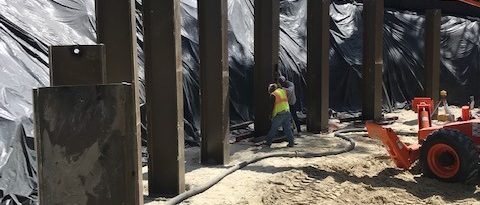 San Lorenzo Valley Water District Cost - Construction on new Probation Storage Tank The probation water storage tank was a 100,000-gallon redwood tank. This facility provides water service to approximately 460 connections in the area of Lockwood Lane and Whispering Pines Drive, in Scotts Valley. The Probation Tank was approximately 50 years old and had reached its life expectancy, required ongoing leakage repair. It was replaced with a new 500,000-gallon welded steel water storage tank.
San Lorenzo Valley Water District Cost - Construction on new Probation Storage Tank The probation water storage tank was a 100,000-gallon redwood tank. This facility provides water service to approximately 460 connections in the area of Lockwood Lane and Whispering Pines Drive, in Scotts Valley. The Probation Tank was approximately 50 years old and had reached its life expectancy, required ongoing leakage repair. It was replaced with a new 500,000-gallon welded steel water storage tank.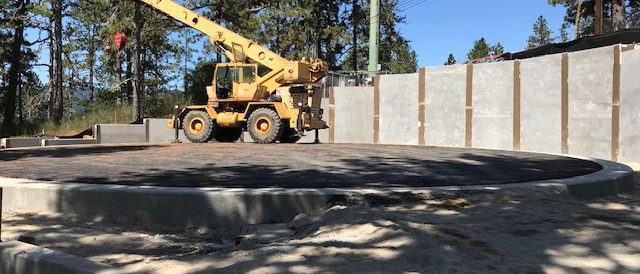 San Lorenzo Valley Water District - The Probation Water Tank Project cost $1,840,000. The Probation Tank project won SLVWD the American Public Works Association (APWA) Environmental Project of the Year award. The Probation Tank project initiated the establishment of the SLVWD's mitigation bank, which is a funding source that acts to preserve, enhance and restore a 6.7-acre Sandhill habitat conservation area. The associated habitat conservation easement will compensate for the expected adverse impacts to similar nearby ecosystems, specifically the site of the probation tank.
San Lorenzo Valley Water District - The Probation Water Tank Project cost $1,840,000. The Probation Tank project won SLVWD the American Public Works Association (APWA) Environmental Project of the Year award. The Probation Tank project initiated the establishment of the SLVWD's mitigation bank, which is a funding source that acts to preserve, enhance and restore a 6.7-acre Sandhill habitat conservation area. The associated habitat conservation easement will compensate for the expected adverse impacts to similar nearby ecosystems, specifically the site of the probation tank.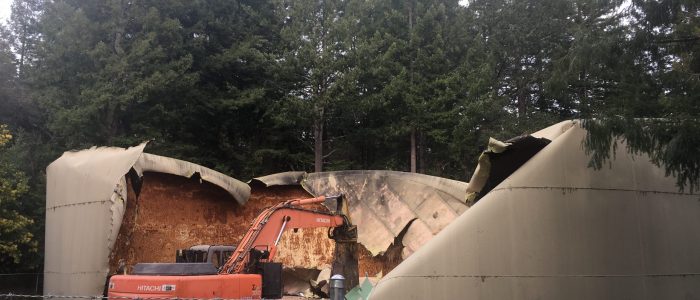 City of Santa Cruz Municipal Utilities - The Bay Street Reservoir reached the end of its useful life and was replaced with two 6 MG tanks.
City of Santa Cruz Municipal Utilities - The Bay Street Reservoir reached the end of its useful life and was replaced with two 6 MG tanks.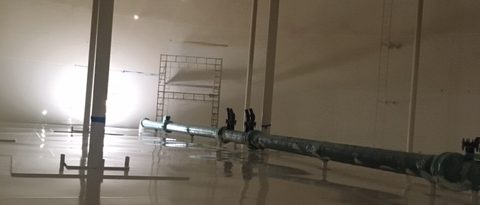 City of Santa Cruz Municipal Utilities - The new "University 5" tank located on Empire Grade serves the west side of Santa Cruz and the north coast, in addition to the university. Significant corrosion, a number of compromised structural members, the inability to meet current building code design standards, and other factors required replacement of the tank.
City of Santa Cruz Municipal Utilities - The new "University 5" tank located on Empire Grade serves the west side of Santa Cruz and the north coast, in addition to the university. Significant corrosion, a number of compromised structural members, the inability to meet current building code design standards, and other factors required replacement of the tank.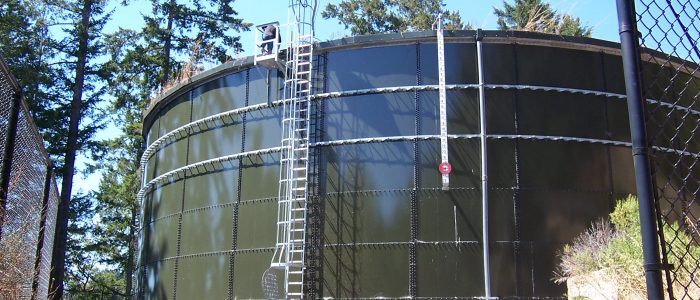 Scotts Valley Water District - Glenwood Tank- This 1.1 million gallon bolted steel tank was installed in 1996 and is the 2nd largest in the Scotts Valley Water District.
Scotts Valley Water District - Glenwood Tank- This 1.1 million gallon bolted steel tank was installed in 1996 and is the 2nd largest in the Scotts Valley Water District.
Water Treatment
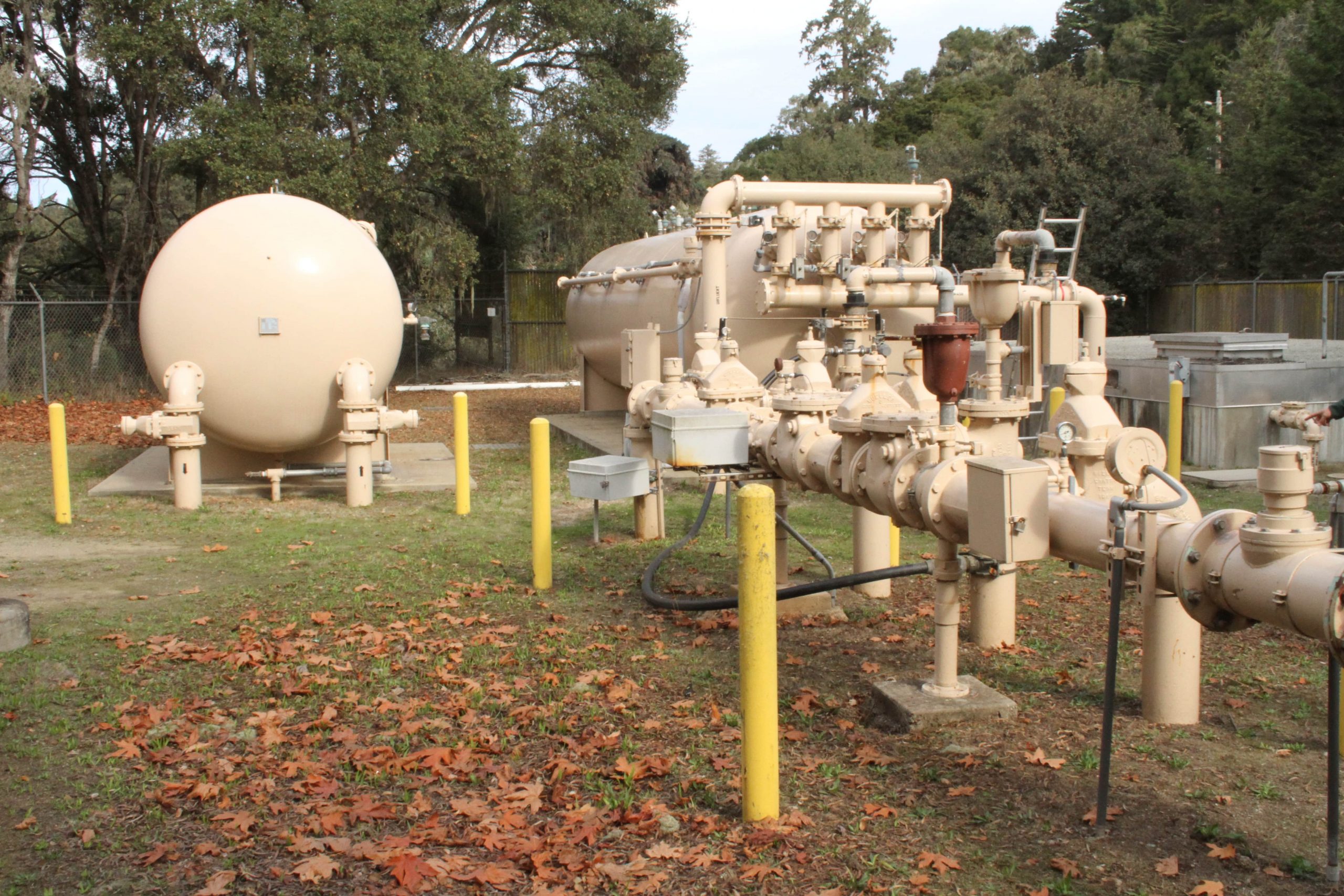 Soquel Creek Water District - T Hopkins well draws water from the Purisima groundwater aquifer. Water treatment at this well site and others treat contaminants out of the groundwater and make it safe for drinking. Iron, manganese and arsenic are often naturally found in groundwater.
Soquel Creek Water District - T Hopkins well draws water from the Purisima groundwater aquifer. Water treatment at this well site and others treat contaminants out of the groundwater and make it safe for drinking. Iron, manganese and arsenic are often naturally found in groundwater.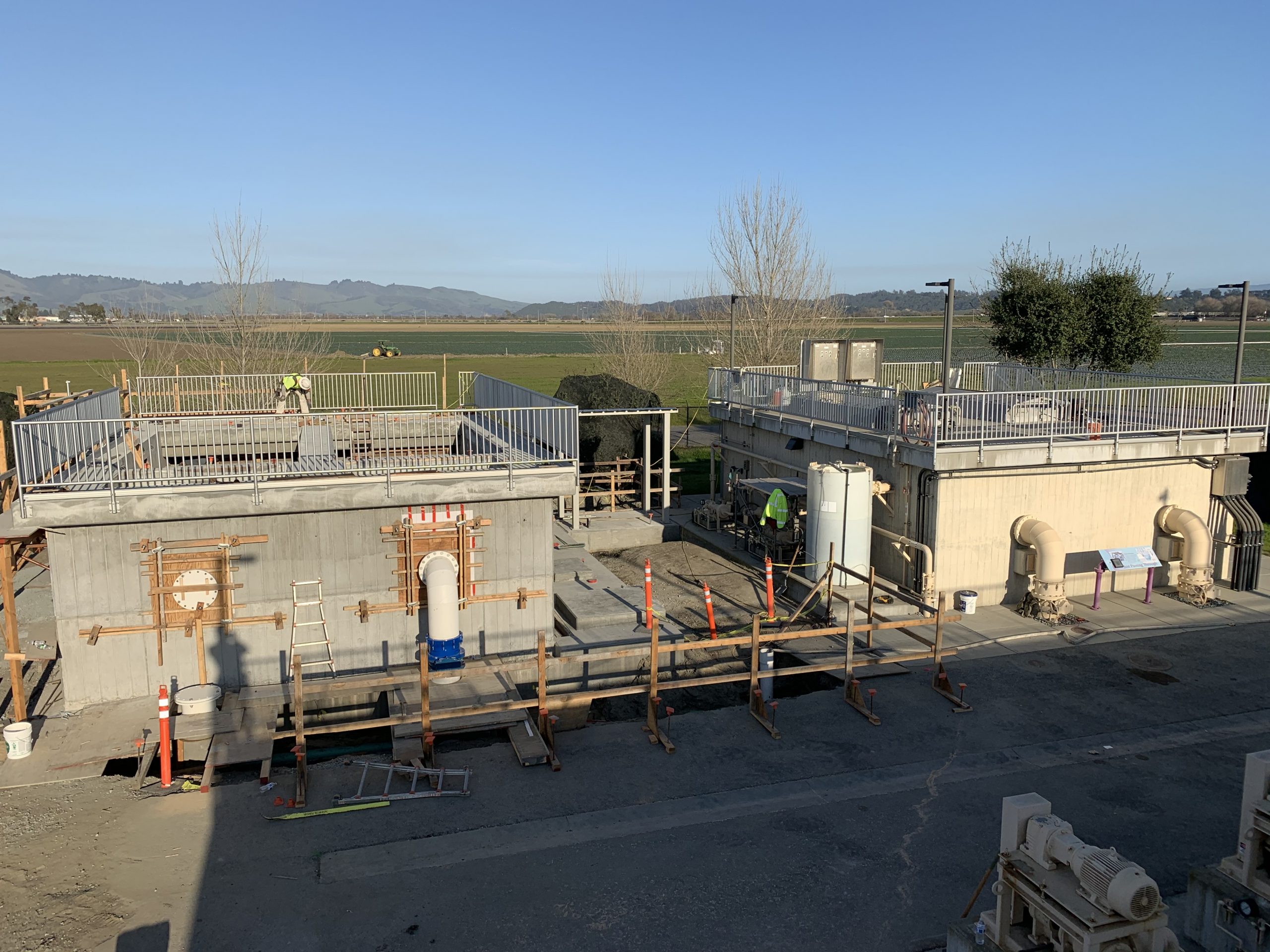 Pajaro Valley Water Management Agency - On the left is the new Disk Filter Bank, increasing the filtering capacity by 50% at the Watsonville Area Water Recycling Facility. The new disk filters increase capacity to produce recycled water and improve the reliability of the water recycling facility. Now that construction of this grant funded project is completed, PV Water will be more resilient in the treatment of varying water qualities. With additional filtration, the amount of water that can be treated also increases, allowing the plant to produce more recycled water per year, for distribution to growers on the coast. Additionally, this will allow more stability in water deliveries, which will benefit our Valley’s overdrafted aquifer and support growers impacted by seawater intrusion who need supplemental sources of water. The cost to construct the new phase 2, Disk Filter Bank was ~$2.5 Million.
Pajaro Valley Water Management Agency - On the left is the new Disk Filter Bank, increasing the filtering capacity by 50% at the Watsonville Area Water Recycling Facility. The new disk filters increase capacity to produce recycled water and improve the reliability of the water recycling facility. Now that construction of this grant funded project is completed, PV Water will be more resilient in the treatment of varying water qualities. With additional filtration, the amount of water that can be treated also increases, allowing the plant to produce more recycled water per year, for distribution to growers on the coast. Additionally, this will allow more stability in water deliveries, which will benefit our Valley’s overdrafted aquifer and support growers impacted by seawater intrusion who need supplemental sources of water. The cost to construct the new phase 2, Disk Filter Bank was ~$2.5 Million.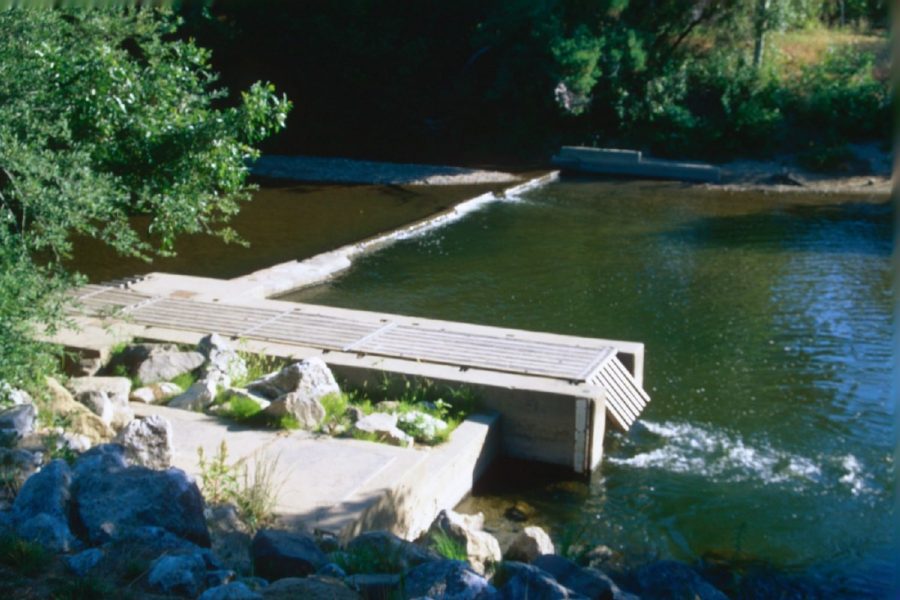 City of Santa Cruz - Water Intake from the San Lorenzo River is being evaluated to ensure reliable and efficient diversion of water from the river to the Graham Hill Treatment Plant.
City of Santa Cruz - Water Intake from the San Lorenzo River is being evaluated to ensure reliable and efficient diversion of water from the river to the Graham Hill Treatment Plant.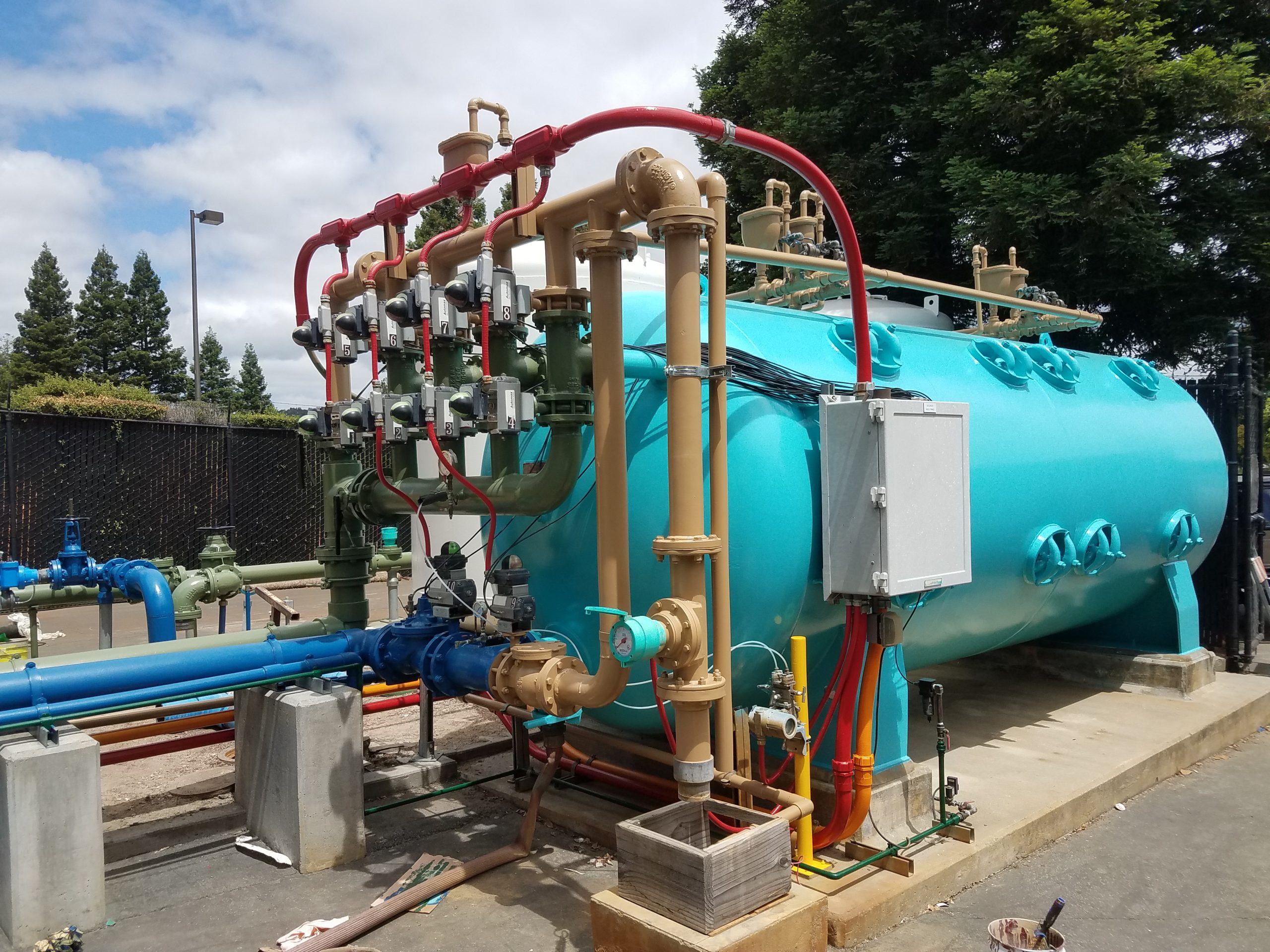 Scotts Valley Water District - Well 10. Sand and carbon pressure filter remove naturally occurring iron and manganese from groundwater.
Scotts Valley Water District - Well 10. Sand and carbon pressure filter remove naturally occurring iron and manganese from groundwater.




